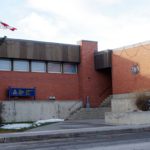Home »

CABBDA responds to Stetski’s letter on DCCs
Letter to the Editor
We are writing in response to the letter from Mayor Wayne Stetski that appeared in the Cranbrook Daily Townsman July 12, to clarify a few points and to further educate the community with respect to the use of municipal Development Cost Charges (DCCs).
The letter stated that DCCs are “fees that are paid to the city by developers to cover the cost of bringing sewer, water, roads and storm sewer to the developer’s lot(s).” This statement is slightly misleading. We provide the following clarification(s):
1) DCCs assist to plan for servicing lots beyond each development by covering the cost to ‘oversize’ pipes for future increased flow and in some cases include extension of ‘trunk’ mains or shared (new and existing development) infrastructure such as reservoirs and for other shared (all tax payers) items such as ultra violet treatment of the city water supply in the future. This is a simplified description; however the point we wish to make is that developers pay for 100% of the cost to service the individual lots within each of their developments. The developer coordinates and pays for the deeply buried infrastructure (such as watermains, sanitary sewer mains and storm pipe), the roads (including the concrete curb and gutter, sidewalks and carriage way structure), the street lights and the power and communications network specific for each development and for each lot created.
2) And the developer is required to supply and install pipe and road connections to their development boundary if there is a lack of existing infrastructure between the developers land and the city infrastructure limits. In some cases, the developer is rebated the cost for oversizing the pipe works (only a small portion of the actual cost of the works and generally doesn’t cover the borrowing cost for the developer to front load the cost of the work) they must install to their development boundary and in other cases, a latecomer agreement is established such that the developer can recover some of the cost in the future (no more than 15 years out) from another developer that benefits from the extended services.
The mayor’s letter lists the current DCCs for municipalities in our area such as Fernie, Invermere and Nelson – all of which currently implement higher DCC rates than Cranbrook. However, it is important to note that Sparwood and Kimberley do NOT charge developers DCCS. Also, many communities are considering lowering their DCC rates to attempt to entice further development within their community. This occurred in Invermere recently. And DCCs are specific to the conditions and capacity of each community which is generally in at state of flux.
The mayor’s letter stated: “There are no DCCs if you are developing a vacant lot in an otherwise developed street.” This does not apply to existing commercial developments or redevelopment of commercial lots. DCCs are charged at the building permit stage for this type (commercial) of development in Cranbrook. That is, if commercial property owners renovate or expand a commercial building, they are subject to a DCC charge regardless if the site is already serviced and no offsite improvements are required. This charge can apply with no change in the commercial land use.
CABBDA encourages all Cranbrook tax payers to get informed about DCCs. CABBDA continues to respond to City staff and Council requests to provide input on the DCCs and other matters.
CABBDA (Cranbrook Area Business, Builders and Developers Association)
Dennis Hockley, President







